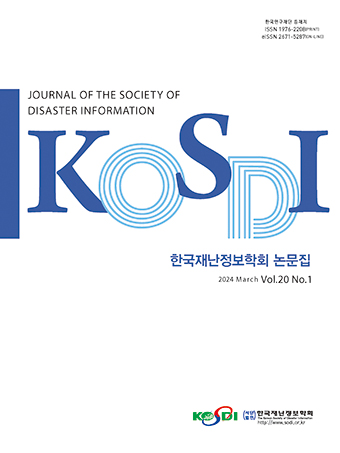Original Article
Abstract
References
Information
Purpose: The purpose of the paper is to review the problems of performance enhancement of safety certification standards and to suggest directions for improvement in order to rationalize safety certification standards for future industrial development and environmental changes. Method: The problems and limitations of the safety certification system are summarized through literature review and interview with manager, and the status of safety certification standards is classified into design standards, performance standards, and detailed standards, and the status analysis is performed. In addition, by synthesizing the results of the investigation and analysis, improvements are suggested to improve the performance of the safety certification standards. Result: Through the survey, the problems and limitations of safety certification could be grouped into six categories: government-led certification system operation, standardized certification standards, long time required to improve certification, poor certification standards preparation system, and lack of reflection of industry opinions. And, as a result of analyzing the certification standards by dividing them into performance and design standards, in the case of machinery, equipment, and protection devices, the design standards were high at 69.7% and 64.9%, whereas in the case of protective equipment, the performance standards were high at 61.1%. In order to improve the performance of safety certification standards centered on design standards, it is necessary to determine the possibility of performance enhancement of the certification standards and determine the feasibility of the inspection test method. In order to improve performance, it was reviewed that it was necessary to establish a systemic foundation and infrastructure, such as strengthening the Product Liability Act, systematizing market monitoring, etc., distributing certification test tasks, and participating in the preparation of certification standards by the private sector. Conclusion: Through this study, the problems and limitations of Korea's safety certification system were summarized and the necessity for performance improvement was reviewed. Performance improvement of safety certification standards is a matter that requires preparatory work, such as legislative revision and infrastructure construction, and requires mid-to-long-term promotion. In addition, rather than improving the overall safety certification standards, the performance requirements for each item subject to certification should be reviewed and promoted, and details should be specified through additional research.
연구목적: 본 논문은 미래 산업발전과 환경변화에 대한 안전인증기준의 합리화를 위하여, 안전인증기준의 성능화에 대한 문제점을 검토하고 개선방향을 제시하는 것을 목적으로 한다. 연구방법: 문헌조사 및 실무자 면담조사를 통해 안전인증 체계에 대한 문제점과 한계점을 정리하고, 안전인증기준의 현황을 설계기준과 성능기준 그리고 세부적인 기준으로 분류하여 현황 분석을 실시한다. 그리고 조사 및 분석한 결과를 종합하여 안전인증기준의 성능화를 위한 개선사항을 제시한다. 연구결과: 조사를 통해 안전인증의 문제점과 한계점은 정부주도의 인증체계운용, 정형화된 인증기준, 인증개선에 장시간이 소요, 인증기준 마련체계의 부실, 업계의견 반영의 부족 등 6가지로 정리 할 수 있었다. 그리고 인증기준을 성능 및 설계기준으로 구분하여 분석한 결과, 기계 및 설비, 방호장치의 경우, 설계기준이 69.7% 및 64.9%로 높게 나타난 반면, 보호구의 경우 성능기준이 61.1%로 높게 나타났다. 설계기준 중심의 안전인증기준을 성능화하기 위해서는 인증기준의 성능화 가능성 판단, 검사시험방법의 규정 가능성 판단 등이 전제되어야 한다. 그리고 성능화를 위해서는 제조물책임법강화, 시장모니터링 등 체계화, 인증시험 업무의 분산, 민간의 인증기준 마련 참여 등의 제도기반 및 인프라 구축이 필요한 것으로 검토 되었다. 결론: 연구를 통해 우리나라 안전인증제도의 문제점과 한계점을 정리하고 성능화 필요성에 대하여 검토 하였다. 안전인증기준의 성능화는 법령정비, 인프라 구축 등 준비 작업이 필요한 사항으로 중장기적인 추진이 필요하다. 또한 전체 안전인증기준의 성능화 보다는 인증대상 품목별로 성능화 요건을 검토하여 추진하고, 세부적인 사항은 추가적인 연구를 통해 구체화해 나가야 한다.
- 2020-OSHRI-904.
- Byeon, J.-H. (2021). "A study on the improvement plan of the safety certification system trough the typology of the Actual condition survey results." The Journal of the Society of Disaster Information, Vol.17, No.2, pp.391-401.
- Ho, H.-S., Kim, J.-G. (2021). "A study on the improvement certification system of inspection and diagnostic equipment for infrastructure using advanced technologies." The Journal of the Society of Disaster Information, Vol. 17, No. 1, pp.97-111.
- Jung, B.-K. (2013). "A comprehensive normativity and co-regulation characteristics of standards." The journal of Contemporary European Studies, Vol. 31, No. 3, pp. 241-266. 10.17052/jces.2013.31.3.241
- Kim, D.W. (2017). "A study in the improvement of safety certification marks displayed on the surface of temporary equipment at construction sites." Journal of Korean Society of Safety, Vol. 32, No. 4, pp. 59-65.
- Oh, S.-H. (2018). A Study on the Improvement of Safety Certification System : Focused on the Occupational Safety and Health Law. Master’s Degree, Graduate school of Ulsan University.
- Seong, C.J. (2020). "Feasibility analysis for the introduction of safety certification system for assembled temporary equipment and materials." Journal of Korean Society of Safety, Vol. 35, No. 3, pp. 32-42.
- Shin, W.S. (2017). "A trend analysis of global standards for the Era of 4th industrial revolution." Journal of Korean Society for Quality Management, Vol. 45, No. 4, pp. 611-628.
- Enforcement Decree of The Occupational Safety and Health Act, Law Information Center webpage, https://www.law.go.kr
- ISO/IEC Directives, Part 2 Clause 4.2, ISO, https://www.iso.org/sites/directives/current/part2/index.xhtml
- Korean Agency for Technology and Standards (2020). The National Technical Standards Encyclo Paper. Korean Agency for Technology and Standards.
- Korea Research Institute of Standards and Science (2014). A Research on Open Collaboration.
- Ministry of Employment and Labor, Policy, Law webpage, http://www.moel.go.kr/info/lawinfo/instruction/list.do
- Safety Certification Review Committee Agenda(2015~2021). KOSHA.
- Society for standards Certification and Safety (2011). Establishment of Basic Principles for National Standardization and Development of a Feasibility Evaluation Tool. Korean Agency for Technology and Standards.
- Technical Barriers to Trade Agreement Annex 3, WTO, https://www.wto.org/english/docs_e/legal_e/17-tbt_e.htm
- Publisher :The Korean Society of Disaster Information
- Publisher(Ko) :한국재난정보학회
- Journal Title :Journal of the Society of Disaster Information
- Journal Title(Ko) :한국재난정보학회논문집
- Volume : 17
- No :3
- Pages :487-499
- DOI :https://doi.org/10.15683/kosdi.2021.9.30.487




 Journal of the Society of Disaster Information
Journal of the Society of Disaster Information







